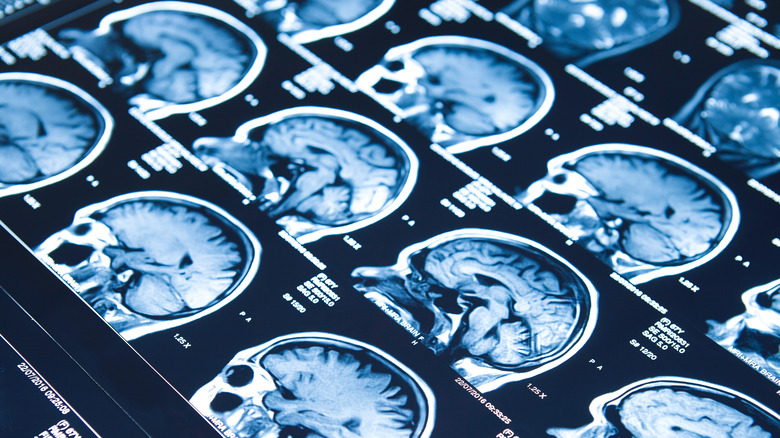This Is How Brains Are Examined For CTE After Death
Competing for headlines alongside wins and losses in the NFL are a string of high-profile players who suffered from a brain condition called chronic traumatic encephalopathy, or CTE. Former NFL players who were only found to suffer from CTE after they died include Junior Seau, Dave Duerson, and many more. Other NFL players recently diagnosed with CTE include former cornerback Phillip Adams, who allegedly shot and killed six people before taking his own life, and Vincent Jackson, who died in 2021, according to USA Today. An estimated 315 former NFL players received a CTE diagnosis after their death (per The New York Times).
Symptoms of CTE include memory loss, lack of impulse control, aggression, and sometimes even suicidal ideation, possibly explaining the extreme behaviors demonstrated by players who were later found to be suffering from the condition. At this time, there is no way to detect CTE in the brain of a living patient. Tragically, this serious condition can only be diagnosed through an autopsy. According to Protect the Brain, however, this could soon change. Until then, here's how brains are examined for CTE after death.
If you or anyone you know is having suicidal thoughts, please call the National Suicide Prevention Lifeline at 1-800-273-TALK (8255).
CTE is diagnosed through brain tissue analysis
Caused primarily by frequent concussions, CTE is a degenerative condition worsened by a build-up in the brain of a particular kind of substance called a tau protein. This leads to a loss of brain mass and the disruption of normal neuron functioning; the onset is much like dementia. Until now, CTE could only be detected after a patient had died, by slicing off a sample of the brain tissue and analyzing it for the tau protein, according to the Concussion Foundation. This is a time-consuming process and not typically part of an autopsy. For this reason, many CTE cases go undiagnosed.
Hope for CTE sufferers could be on the way, however. Also, per the Concussion Foundation, diagnostic criteria have been developed to help spot CTE in those still living, and recent studies show it may be possible to detect excess tau protein in a living subject (via Protect the Brain). Catching CTE early and taking steps to address the condition could one day help those suffering from the degenerative disease, preventing tragic outcomes like those of Phillip Adams and Vincent Jackson, as well as an ever-growing list of other NFL players, professional athletes, and those employed in high-risk professions.

